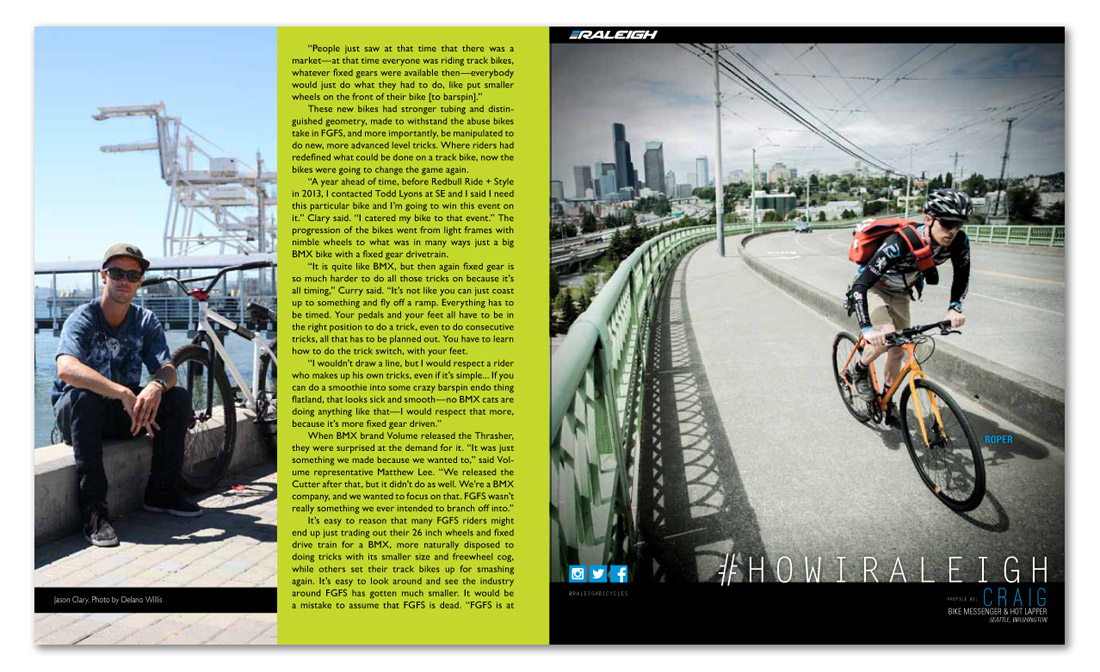


“People just saw at that time that there was a market—at that time everyone was riding track bikes, whatever fixed gears were available then—everybody would just do what they had to do, like put smaller wheels on the front of their bike [to barspin].”
These new bikes had stronger tubing and distinguished geometry, made to withstand the abuse bikes take in FGFS, and more importantly, be manipulated to do new, more advanced level tricks. Where riders had redefined what could be done on a track bike, now the bikes were going to change the game again.
“A year ahead of time, before Redbull Ride + Style in 2013, I contacted Todd Lyons at SE and I said I need this particular bike and I’m going to win this event on it.” Clary said. “I catered my bike to that event.” The progression of the bikes went from light frames with nimble wheels to what was in many ways just a big BMX bike with a fixed gear drivetrain.
“It is quite like BMX, but then again fixed gear is so much harder to do all those tricks on because it’s all timing,” Curry said. “It’s not like you can just coast up to something and fly off a ramp. Everything has to be timed. Your pedals and your feet all have to be in the right position to do a trick, even to do consecutive tricks, all that has to be planned out. You have to learn how to do the trick switch, with your feet.
“I wouldn’t draw a line, but I would respect a rider who makes up his own tricks, even if it’s simple... If you can do a smoothie into some crazy barspin endo thing flatland, that looks sick and smooth—no BMX cats are doing anything like that—I would respect that more, because it’s more fixed gear driven.”
When BMX brand Volume released the Thrasher, they were surprised at the demand for it. “It was just something we made because we wanted to,” said Volume representative Matthew Lee. “We released the Cutter after that, but it didn’t do as well. We’re a BMX company, and we wanted to focus on that. FGFS wasn’t really something we ever intended to branch off into.”
It’s easy to reason that many FGFS riders might end up just trading out their 26 inch wheels and fixed drive train for a BMX, more naturally disposed to doing tricks with its smaller size and freewheel cog, while others set their track bikes up for smashing again. It’s easy to look around and see the industry around FGFS has gotten much smaller. It would be a mistake to assume that FGFS is dead. “FGFS is at